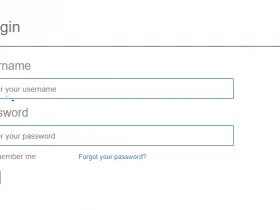Jinsi ya kuandika Field report Tanzania {Full Guide};- Undergraduate students in different countries such as Tanzania use to do a field study to practice what they have learned in theory or practice to get experience working here, a field report sample can be used to create your own field report that can be sent to supervisors as you would in your studies.
Jinsi ya kuandika Field report Tanzania
The purpose of field reports is to describe an observed person, place, or event and to analyze that observation data in order to identify and categorize common themes in relation to the research problem(s) underpinning the study. The data is often in the form of notes taken during the observation but it can also include any form of data gathering, such as, photography, illustrations, or audio recordings.
Also, You Might Wanna Read;- Download Field Report Sample PDF for Free
How to Begin
Field reports are most often assigned in the applied social sciences [e.g., social work, anthropology, gerontology, criminal justice, education, law, the health care professions] where it is important to build a bridge of relevancy between the theoretical concepts learned in the classroom and the practice of actually doing the work you are being taught to do. Field reports are also common in certain science and technology disciplines
The field report sample Should includ the following important parts:-
- Cover page
- Table of contents
- Primary pages
- Background of organization
- Activities/task/duties performed by Student
- Work Environment
- Problem faced
- Solutions to problem
- Expectations and results of attachment
- Result of the Attachment
- New Things Learned
- Gaps in Teaching Theory and Practices
- Relevance of Attachment
- Conclusions
- Recommendations
Structure and Writing Style
How you choose to format your field report is determined by the research problem, the theoretical perspective that is driving your analysis, the observations that you make, and/or specific guidelines established by your professor. Since field reports do not have a standard format, it is worthwhile to determine from your professor what the preferred organization should be before you begin to write. Note that field reports should be written in the past tense. With this in mind, most field reports in the social sciences include the following elements:
I. Introduction
The introduction should describe the specific objective and important theories or concepts underpinning your field study. The introduction should also describe the nature of the organization or setting where you are conducting the observation, what type of observations you have conducted, what your focus was, when you observed, and the methods you used for collecting the data. You should also include a review of pertinent literature.

II. Description of Activities
Your readers only knowledge and understanding of what happened will come from the description section of your report because they have not been witness to the situation, people, or events that you are writing about. Given this, it is crucial that you provide sufficient details to place the analysis that will follow into proper context; don’t make the mistake of providing a description without context. The description section of a field report is similar to a well written piece of journalism. Therefore, a helpful approach to systematically describing the varying aspects of an observed situation is to answer the “Five W’s of Investigative Reporting.” These are:
- What — describe what you observed. Note the temporal, physical, and social boundaries you imposed to limit the observations you made. What were your general impressions of the situation you were observing. For example, as a student teacher, what is your impression of the application of iPads as a learning device in a history class; as a cultural anthropologist, what is your impression of women participating in a Native American religious ritual?
- Where — provide background information about the setting of your observation and, if necessary, note important material objects that are present that help contextualize the observation [e.g., arrangement of computers in relation to student engagement with the teacher].
- When — record factual data about the day and the beginning and ending time of each observation. Note that it may also be necessary to include background information or key events which impact upon the situation you were observing [e.g., observing the ability of teachers to re-engage students after coming back from an unannounced fire drill].
- Who — note the participants in the situation in terms of age, gender, ethnicity, and/or any other variables relevant to your study. Record who is doing what and saying what, as well as, who is not doing or saying what. If relevant, be sure to record who was missing from the observation.
- Why — why were you doing this? Describe the reasons for selecting particular situations to observe. Note why something happened. Also note why you may have included or excluded certain information.





Leave a Reply